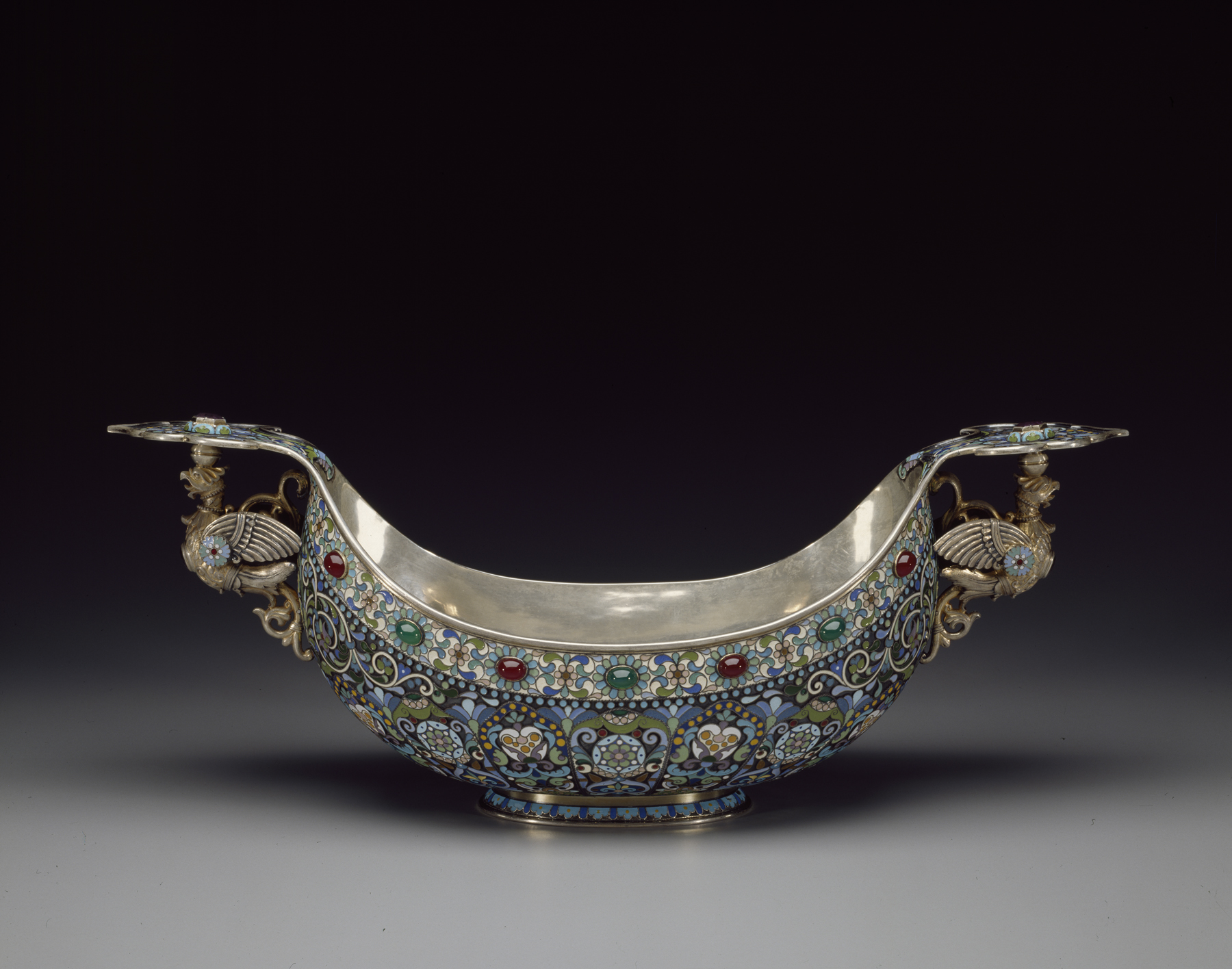Two-Handled Kovsh
(18th and 19th Centuries )
This type of two handled kovsh (often used as a serving bowl), like the single-handled variety, was made in wood in northern Russia and throughout the Scandinavian countries. Such a large object was surely made as a presentation piece.
The sides of this kovsh have enameled panels imitating lobes of the kind found on many silver bowls. Each contains a stylized floral design in multi-colored enamel. Vari-colored cabochon stones are set in the floral ornament forming the border. The two handles with amethysts set in them are supported by winged cockerels.
Provenance
Provenance (from the French provenir, 'to come from/forth') is the chronology of the ownership, custody, or location of a historical object. Learn more about provenance at the Walters.
Mrs. Sarah D. Azrael [date and mode of acquisition unknown]; Walters Art Museum, 1985, by bequest.
Exhibitions
| 1996-1997 | Russian Enamels. The Walters Art Gallery, Baltimore. |
| 1988-1989 | A Millennium of Christianity: Russian Art from The Walters Art Gallery. The Walters Art Gallery, Baltimore. |
Geographies
Russia, Moscow (Place of Origin)
Measurements
H: 8 1/4 x W: 22 1/16 x D: 9 13/16 in. (21 x 56 x 25 cm)
Credit Line
Bequest of Mrs. Sara D. Azrael, 1985
Location in Museum
Not on view
Accession Number
In libraries, galleries, museums, and archives, an accession number is a unique identifier assigned to each object in the collection.
In libraries, galleries, museums, and archives, an accession number is a unique identifier assigned to each object in the collection.
44.659


